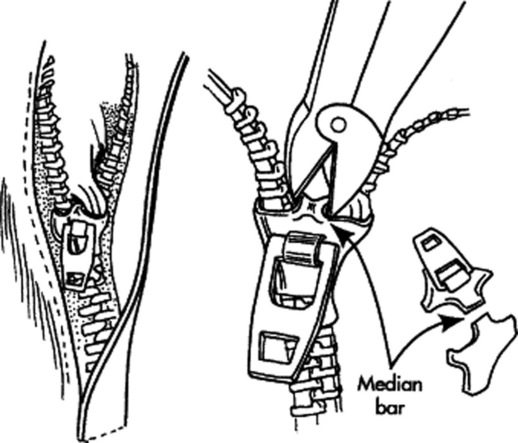Chapter 60 Pelvic Trauma and Genitourinary Injury
2 Describe the immediate and delayed complications of renal trauma
McAleer IM, Kaplan GW: Pediatric genitourinary trauma. Urol Clin North Am 22:177–188, 1995.
4 How are renal injuries classified?
 Grade I: Contusions or nonexpanding subcapsular hematomas with associated hematuria
Grade I: Contusions or nonexpanding subcapsular hematomas with associated hematuria
 Grade II: Hematomas confined to the retroperitoneum or laceration < 1 cm in depth without urinary extravasation
Grade II: Hematomas confined to the retroperitoneum or laceration < 1 cm in depth without urinary extravasation
 Grade III: Lacerations extending into the perinephric fat > 1 cm in depth without involvement of the collecting system or extravasation
Grade III: Lacerations extending into the perinephric fat > 1 cm in depth without involvement of the collecting system or extravasation
 Grade IV: Deep lacerations into the collecting system and vascular injuries with contained hemorrhage
Grade IV: Deep lacerations into the collecting system and vascular injuries with contained hemorrhage
 Grade V: Fractured or completely shattered kidneys and avulsion of the renal pedicle with organ devascularization
Grade V: Fractured or completely shattered kidneys and avulsion of the renal pedicle with organ devascularization
5 Which imaging modality is considered the diagnostic test of choice for evaluation of renal injuries in stable pediatric patients?
Stubbs DM: Emergency radiology of urinary tract injuries. Am J Emerg Med 10:242–250, 1992.
11 What are the indications for urethrography in pediatric trauma patients?
Kotkin L, Brock JW: Isolated ureteral injury caused by blunt trauma. Urology 47:111–113, 1996.
14 Describe the management for zipper entrapment of the penis or foreskin
Using a bone or wire cutter, split the median bar of the zipper. With the fastener intact, the zipper falls apart, freeing the foreskin or penis (Fig. 60-1). Warm soaks may be used after the procedure to control edema. Some children may require conscious sedation and, in severe cases, a penile block. Alternatively, mineral oil can be applied liberally to the entrapped tissue and allowed to soak for 15 minutes. The trapped skin may then be easily released.
16 What is the best predictor of abdominal injury in children with pelvic fractures?
Livne PM, Gonzales ET Jr: Genitourinary trauma in children. Urol Clin North Am 12:53–65, 1985.


